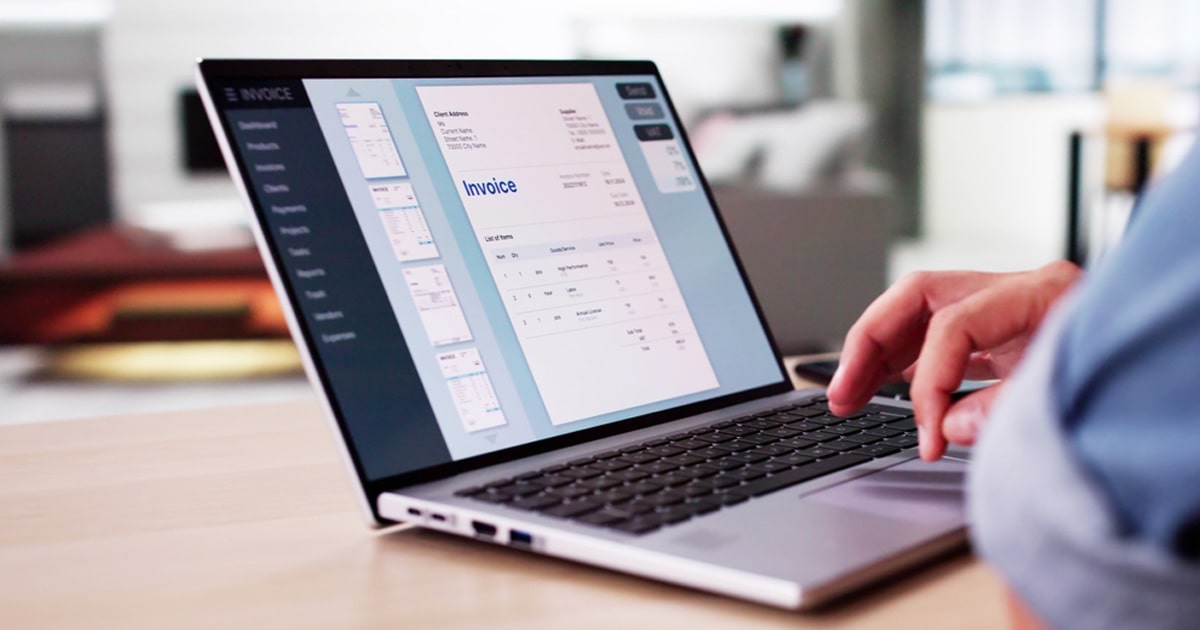When you run an e-commerce business in Ireland, you have to deal with a lot of different payment systems, inventory systems, and sales channels. Sound familiar? You’re selling through Shopify while managing Amazon orders, processing Stripe payments, and trying to keep track of stock levels across different warehouses. Meanwhile, your accounting sits in a separate silo, requiring hours of manual data entry each month.
This fragmented approach costs you time. It costs you money. And it’s holding your business back from reaching its full potential.
The solution isn’t just better accounting software. It’s building a complete ecommerce accounting software stack that connects every aspect of your business. When done right, this integrated approach transforms your back-office operations from a time-consuming burden into a strategic asset that drives growth.
I’ve spent years helping Irish ecommerce businesses, marketing agencies, and SaaS companies build these integrated systems. The businesses that get this right don’t just save time on monthly bookkeeping, they gain real-time insights that help them make better decisions, faster.

Why Your Ecommerce Business Needs More Than Basic Accounting
Traditional accounting software wasn’t designed for modern ecommerce businesses. Your grandfather’s corner shop had one till, one bank account, and sold products face-to-face. Your business operates differently.
You’re processing hundreds of transactions daily across multiple platforms. Shopify handles your main website sales, but you’re also selling through Amazon, eBay, and perhaps a few other marketplaces. Each platform has different fee structures, payment timings, and reporting formats.
Then there’s VAT compliance to consider. Revenue expects accurate records, but manually reconciling sales data from five different platforms while accounting for various VAT rates is a nightmare. One mistake and you’re facing penalties that could have been easily avoided.
Here’s what happens when you don’t have an integrated system:
- Data entry errors multiply – Manually inputting sales data from different platforms means mistakes are inevitable
- Month-end closes take forever – You spend days reconciling accounts instead of focusing on growth
- Cash flow visibility disappears – You can’t see real-time financial performance across all channels
- Strategic decisions get delayed – Without integrated data, you’re flying blind on profitability and trends
The best accounting software for ecommerce isn’t just one tool – it’s a connected ecosystem that automates data flow between all your business systems.
Core Components Of Your Ecommerce Accounting Software Stack
Building an effective ecommerce accounting software stack requires six key components working together seamlessly. Each component serves a specific purpose, but the magic happens when they’re properly integrated.
| Software | Key Features | Pricing (Starting) | Best For | Integration Highlights |
| Xero | Multi-currency, bank feeds, real-time reporting, VAT compliance | €25/month | Irish SMEs, ecommerce, agencies | Integrates with Shopify, A2X, Dext, Stripe |
| QuickBooks Online | Scalable, easy invoicing, strong reporting | €17/month | Tech startups, service + product sales | Integrates with Shopify, PayPal, Dext |
| Sage | Payroll, compliance, inventory management | €30+/month | Established businesses with payroll needs | Integrates with payment gateways, inventory |
| Surf Accounts | Simple, Irish-focused, easy to use | €20/month | Small businesses with straightforward needs | Basic integrations with Xero & banks |
| A2X | Automated multi-channel sales reconciliation | €19-79/month (volume-based) | Ecommerce sellers on Shopify, Amazon | Syncs sales data directly to Xero, QuickBooks |
| Dext Prepare | Receipt capture, invoice automation | €15-35/month per user | Businesses needing expense automation | Direct integration with Xero, QuickBooks |
| Cin7 | Inventory & order management | Custom pricing | Complex inventory ecommerce | Integrates with Xero, Shopify, payment gateways |
| Syft Analytics | Advanced financial analytics, reporting, forecasts, dashboards | €19/month [approx.] | Ecommerce, Agencies, SaaS, Consolidated Entities | Integrates with Xero, QuickBooks, Sage, Shopify |
1. Cloud Accounting Platform (The Foundation)
Xero leads the pack for Irish ecommerce businesses. Its open API architecture means it plays nicely with almost every ecommerce platform and automation tool you’ll need. The software handles multi-currency transactions, provides real-time reporting, and offers bank reconciliation features that save hours each month.
QuickBooks Online works well for tech startups and agencies that need scalable solutions. It’s particularly strong for service-based businesses that also sell products online.
Sage brings powerful payroll and compliance features that established businesses appreciate. If you’re processing significant payroll alongside your ecommerce operations, Sage’s integrated approach can streamline everything.
Surf Accounts offers a simplified, Irish-focused solution for smaller businesses. It’s less feature-rich than Xero but perfectly adequate for businesses with straightforward needs.
2. Sales Channel Integration Tools
A2X automates the complex process of importing sales data from multiple ecommerce platforms into your accounting software. Instead of manually entering hundreds of transactions, A2X creates summary entries that match your platform settlements perfectly.
The software handles:
- Multi-channel sales reconciliation for Shopify, Amazon, Etsy, and eBay
- Automatic fee calculations and categorisation
- Currency conversion for international sales
- Tax handling across different jurisdictions
Without A2X, you’d spend hours each month manually matching settlement amounts to individual transactions. With it, the process becomes completely automated.
3. Receipt and Expense Management
Dext Prepare (formerly Receipt Bank) eliminates manual receipt processing. You simply photograph receipts with your phone, and the software extracts all relevant data automatically. It integrates directly with Xero, creating purchase invoices and expense entries without manual intervention.
Dext Ecommerce takes this further by automatically importing supplier invoices and matching them to your accounting records. For ecommerce businesses dealing with multiple suppliers, this automation is invaluable.
4. Payment Gateway Integration
Stripe and PayPal integrations ensure every transaction, including fees, appears correctly in your accounting system. Manual entry of payment gateway data is error-prone and time-consuming. Automated integration means your accounts are always up-to-date and accurate.
5. Inventory and Order Management
Cin7 and Unleashed bridge the gap between your inventory systems and accounting software. These platforms track stock levels across multiple locations while automatically creating purchase orders and updating cost of goods sold in your accounting system.
For businesses with complex inventory requirements, this integration prevents stockouts while ensuring accurate inventory valuation in your accounts.
6. Advanced Analytics and Reporting
Syft Analytics has quickly established itself as a go-to platform for Irish businesses needing powerful, actionable insights from their accounting and ecommerce data. Syft seamlessly integrates with Xero, QuickBooks, Sage, and popular ecommerce apps like Shopify and Stripe, consolidating all your financials and operational data onto a single platform.
- Data Visualisation & Dashboards: Syft transforms your accounting data into interactive dashboards and beautiful, customisable reports, ideal for directors, advisors, and growing teams seeking clarity across multiple data sources in real time.
- Multi-Entity & Multi-Currency Consolidation: If you manage multiple brands, business units or deals with international markets, Syft consolidates results across unlimited entities and over 170 currencies, automatically handling eliminations and group reporting.
- AI-Powered Insights & Forecasting: Automated, AI-driven recommendations and scenario modelling allow you to quickly spot growth opportunities or potential risks. You can run budget-vs-actual analysis, model ‘what-if’ scenarios, and forecast revenue or cash flow by product, channel, or customer segment.
- Ready-Made Templates & Collaboration: Syft makes it simple to deliver management reports or tailored KPIs to your team or clients. Share interactive dashboards, schedule regular updates, and streamline advisory conversations, all with live, collaborative links.
For Irish ecommerce brands, agencies, and SaaS founders, Syft takes your monthly management reporting far beyond spreadsheets, and puts strategic insights at your fingertips, helping you shift focus from compliance to real business growth advice.

Marketing And Analytics Integration
Your ecommerce accounting software stack shouldn’t stop at basic financial data. Integrating marketing analytics provides insights that drive better business decisions.
Klaviyo integration connects email marketing performance with customer lifetime value data. You can see which email campaigns generate the most profitable customers, not just the most sales.
Triple Whale provides comprehensive analytics that combine advertising spend with actual profitability. Instead of optimising for revenue, you can optimise for profit margins.
StoreHero and Syft Analytics offer advanced reporting that combines financial data with operational metrics. You’ll see which products, channels, and customer segments drive the most profitable growth.
This integrated approach means your marketing decisions are based on actual profitability, not just top-line revenue figures.
Essential Ecommerce Accounting Automation Tools
Automation transforms your ecommerce accounting from a monthly chore into a real-time business intelligence system. Here’s how the right ecommerce accounting automation tools work in practice.
Automated Data Flow
Instead of manually downloading CSV files from each platform, your integrated stack automatically imports data at preset intervals. Shopify sales appear in Xero within hours, complete with proper categorisation and VAT calculations.
Intelligent Reconciliation
Bank reconciliation becomes effortless when your system automatically matches incoming payments to specific sales transactions. Complex settlement patterns from platforms like Amazon become simple to understand and reconcile.
Real-Time Reporting
Monthly accounts become weekly or even daily insights. You can see which products are most profitable, which marketing channels drive the best customers, and where your cash flow might need attention.
Automated Compliance
VAT calculations happen automatically based on customer location and product type. Revenue reporting becomes straightforward because all the data is properly categorised from the start.
Building Your Integration Strategy
Creating an effective ecommerce accounting software stack requires careful planning. You can’t just install multiple tools and hope they work together perfectly.
Start with Your Accounting Platform
Choose Xero, QuickBooks, or Sage based on your business size and complexity. Xero typically offers the best integration options for ecommerce businesses, while QuickBooks works well for service-based companies with some product sales.
Map Your Data Flow
Identify every place money enters or leaves your business:
- Sales platforms (Shopify, Amazon, eBay)
- Payment processors (Stripe, PayPal, bank transfers)
- Expense sources (suppliers, marketing spend, operational costs)
- Inventory movements (purchases, sales, wastage)
Choose Integration Tools
Select tools that connect your data sources to your accounting platform. A2X handles multi-channel sales, Dext manages receipts and invoices, and direct integrations handle payment processor data.
Test and Refine
Implementation isn’t a one-time event. You’ll need to test data accuracy, adjust categorisation rules, and refine reporting to match your business needs.
What Success Looks Like: A Practical Example
Consider a Galway-based skincare business selling through their Shopify store, Amazon, and several Irish retailers. Like many ecommerce businesses, they were spending three days each month manually reconciling accounts and preparing VAT returns.
An integrated stack approach might include:
- Xero as the accounting foundation
- A2X for multi-channel sales reconciliation
- Dext for receipt and invoice management
- Cin7 for inventory tracking
- Stripe integration for payment processing
With this type of setup, monthly accounting time could drop from three days to half a day. More importantly, real-time visibility into which products and channels are most profitable would enable better marketing spend allocation, potentially resulting in significant profit margin improvements.
Automated purchase order creation and three-way matching could eliminate manual errors and improve supplier relationships.
Advanced Features And Analytics
Modern ecommerce accounting software stacks offer sophisticated analytics that go far beyond basic financial reporting. These features help you understand your business at a deeper level.
Customer Lifetime Value Integration
By connecting your ecommerce platform with your accounting system, you can calculate true customer lifetime value. This metric helps you make better decisions about customer acquisition costs and retention strategies.
Profit Margin Analysis
Integrated systems provide real-time profit margin analysis by product, channel, and customer segment. You can quickly identify which areas of your business are most profitable and deserve additional investment.
Cash Flow Forecasting
With automated data flow from all your business systems, cash flow forecasting becomes accurate and actionable. You can predict future cash needs based on sales trends, seasonal patterns, and payment terms.
Scenario Planning
Advanced reporting tools let you model different business scenarios. What happens if you expand to new markets? How would different pricing strategies affect profitability? Integrated data makes these questions answerable.
Cost Considerations And ROI
Building an ecommerce accounting software stack requires investment, but the returns justify the costs for most businesses. Here’s how to think about the financial aspects.
Monthly Software Costs
- Xero: From €25 monthly for small businesses
- A2X: €19-79 monthly depending on transaction volume
- Dext: €15-35 monthly per user
- Integration tools: €10-50 monthly each
Total monthly costs typically range from €80-200 for small businesses, scaling with transaction volume and complexity.
Time Savings
Most businesses save 15-25 hours monthly on accounting tasks. At €30 per hour, that’s €450-750 in time savings monthly. The software pays for itself through time savings alone.
Accuracy Improvements
Automated systems virtually eliminate data entry errors. For businesses dealing with VAT compliance, this accuracy prevents costly mistakes and penalties.
Strategic Value
The biggest benefit comes from better decision-making. When you have real-time visibility into profitability by product, channel, and customer segment, you can make strategic decisions that drive growth.
Common Implementation Challenges
Building an integrated ecommerce accounting software stack isn’t without challenges. Here are the most common issues and how to address them.
Data Quality Issues
Historical data might be inconsistent or incomplete. Plan for a data cleanup period when implementing new systems. This upfront investment ensures accurate reporting going forward.
Integration Complexity
Some integrations require technical expertise. Consider working with specialists who understand both ecommerce operations and accounting requirements. This expertise can save weeks of frustration.
Change Management
Your team needs training on new systems and processes. Budget time for training and expect a learning curve as everyone adapts to new workflows.
Ongoing Maintenance
Integrated systems require ongoing attention. Software updates, new integrations, and changing business requirements mean your stack needs regular review and adjustment.
Managing Your Team Through The Transition
Implementing a new ecommerce accounting software stack affects your entire team. Our guide ‘How To Manage Remote Teams For Your E-Commerce Business’ provides additional insights on managing change across distributed teams.
Clear communication about benefits and timelines helps ensure smooth adoption. When team members understand how the new system will make their work easier, they’re more likely to embrace the changes.
Getting Started: Your Next Steps
Building an effective ecommerce accounting software stack might seem overwhelming, but you don’t need to implement everything at once. Start with these priorities:
- Choose your accounting platform – Xero offers the best integration options for most ecommerce businesses
- Integrate your largest sales channel – Start with Shopify or Amazon, whichever generates more revenue
- Automate payment processing – Connect Stripe or PayPal to eliminate manual transaction entry
- Add receipt management – Dext can immediately reduce manual invoice processing
- Expand gradually – Add additional integrations as you see the benefits
The key is starting with basics and building complexity gradually. Each integration should solve a specific problem and provide clear value before moving to the next component.
The question isn’t whether you can afford to build an integrated accounting stack – it’s whether you can afford not to.
If you’re ready to transform your ecommerce accounting from a monthly burden into a strategic advantage, we’re here to help. Our ‘ecommerce growth guide’ provides detailed implementation strategies, while our team can contact us to discuss your specific requirements.
FAQs
What is an ecommerce accounting software stack?
An ecommerce accounting software stack is a collection of integrated tools that automate the flow of financial data between your ecommerce platforms, payment processors, and accounting software. Instead of manually entering data from multiple sources, the stack creates seamless connections that ensure accurate, real-time financial reporting.
How do I choose the right tools for my business?
Start by mapping your current data sources – sales platforms, payment processors, and expense categories. Choose an accounting platform that integrates well with your existing tools, then add automation layers that address your biggest pain points. Consider factors like transaction volume, number of sales channels, and team size when making decisions.
Can I integrate multiple tools seamlessly?
Yes, modern accounting platforms like Xero are designed for integration. Tools like A2X, Dext, and direct payment processor connections work together to create automated data flows. The key is choosing tools that are built for integration rather than trying to force incompatible systems to work together.
What are the costs associated with these tools?
Monthly costs typically range from €80-200 for small businesses, scaling with transaction volume. However, the time savings alone usually justify the investment. Most businesses save 15-25 hours monthly on accounting tasks, which translates to significant cost savings even before considering the strategic benefits of better data.
How long does implementation take?
Basic integration can be completed in a few weeks, but full implementation typically takes 2-3 months. This includes data migration, system testing, team training, and workflow optimisation. The timeline depends on your business complexity and the number of integrations required.
Do I need technical expertise to manage these integrations?
While the tools are designed for business users, initial setup often benefits from technical expertise. Many businesses work with specialists for implementation then manage day-to-day operations internally. The ongoing maintenance requirements are minimal once systems are properly configured.



